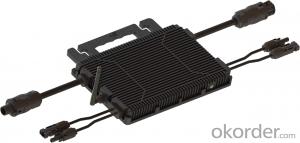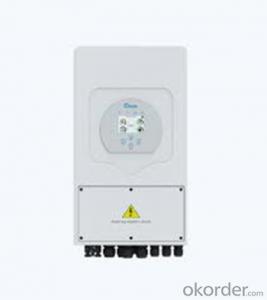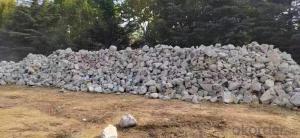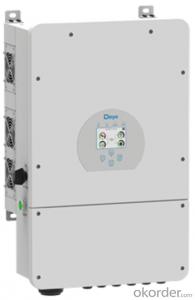Loading Port:Shanghai
Payment Terms:TT OR LC
Min Order Qty:1 set
Supply Capability:2500 set/month
1. Structure of Inlet and Outlet at the bottom of Manifold Solar Collector Model SC-HD Description:
This product is composed of Aluminium alloy for frame, rock wool for the insulation,tri-element vacuum glass tube and antifreeze heat pipe.It can often be used in subzero temperatures without the system sustaining damage. Flat plate systems often require expensive and complicated "antifreeze" systems to be installed.
2. Main Features of Inlet and Outlet at the bottom of Manifold Solar Collector Model SC-HD
1) The inlet and outlet be opened on the bottom of manifold; It looks more artistic than trandithional manifold;
2) Good sealed in end of cover, It can provide higher insulation efficiency;
3) The most advantage is that It can be Emptyed the medium( water or deicing fluid) in the Manifold;
3. Inlet and Outlet at the bottom of Manifold Solar Collector Model SC-HD Images
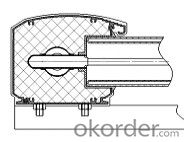
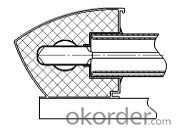
4. Inlet and Outlet at the bottom of Manifold Solar Collector Model SC-HD Specifications
Model | SC-HD-10 | SC-HD-15 | SC-HD-18 | SC-HD-20 | SC-HD-24 | SC-HD-25 | SC-HD-30 |
SC-H1-10 | SC-H1-15 | SC-H1-18 | SC-H1-20 | SC-H1-24 | SC-H1-25 | SC-H1-30 | |
Vacuum tube quantity(pcs) | 10 | 15 | 18 | 20 | 24 | 25 | 30 |
Tube spacing (㎜) | 75 | 75 | 75 | 75 | 75 | 75 | 75 |
Vacuum tube diameter/length (㎜) | φ58/1700 | φ58/1700 | φ58/1700 | φ58/1700 | φ58/1700 | φ58/1700 | φ58/1700 |
Vacuum tube material | high borosilicate glass 3.3 | high borosilicate glass 3.3 | high borosilicate glass 3.3 | high borosilicate glass 3.3 | high borosilicate glass 3.3 | high borosilicate glass 3.3 | high borosilicate glass 3.3 |
Vacuum tube inner/outer pipe wall thickness (㎜) | 1.6/1.8 | 1.6/1.8 | 1.6/1.8 | 1.6/1.8 | 1.6/1.8 | 1.6/1.8 | 1.6/1.8 |
Heat pipe condensing end diameter/length (㎜) | φ14/1750 | φ14/1750 | φ14/1750 | φ14/1750 | φ14/1750 | φ14/1750 | φ14/1750 |
heat pipe material/wall thickness (㎜) | Copper tp2/0.6 | Copper tp2/0.6 | Copper tp2/0.6 | Copper tp2/0.6 | Copper tp2/0.6 | Copper tp2/0.6 | Copper tp2/0.6 |
inner tank diameter/wall thickness (㎜) | φ35/1.0 | φ35/1.0 | φ35/1.0 | φ35/1.0 | φ35/1.0 | φ35/1.0 | φ35/1.0 |
connector size | φ22 or 3/4″ | φ22or 3/4″ | φ22or 3/4″ | φ22or 3/4″ | φ22or 3/4″ | φ22or 3/4″ | φ22or 3/4″ |
collector insulation material/thickness (㎜) | Rock wool/40 | Rock wool/40 | Rock wool/40 | Rock wool/40 | Rock wool/40 | Rock wool/40 | Rock wool/40 |
solar collector rated pressure (MPa) | 0.6 | 0.6 | 0.6 | 0.6 | 0.6 | 0.6 | 0.6 |
collector operating temperature ℃ | <100 | <100 | <100 | <100 | <100 | <100 | <100 |
collector volume (L) | 0.69 | 0.98 | 1.15 | 1.27 | 1.50 | 1.56 | 1.85 |
collector aperture area (㎡) | 1.0 | 1.5 | 1.8 | 2.0 | 2.4 | 2.5 | 3.0 |
collector total area (㎡) | 1.56 | 2.30 | 2.74 | 3.04 | 3.63 | 3.77 | 4.51 |
referral traffic (L/min) | 0.75 | 1.13 | 1.35 | 1.50 | 1.81 | 1.88 | 2.26 |
intensity pressure (Pa) | 23.2 | 59.2 | 90.6 | 116.7 | 181.7 | 200.2 | 314.0 |
intercept efficient η0 | 0.744 | 0.744 | 0.744 | 0.744 | 0.744 | 0.744 | 0.744 |
heat loss coefficient a | 2.09 | 2.09 | 2.09 | 2.09 | 2.09 | 2.09 | 2.09 |
collector power (W)1000W/㎡ irradiation | 620 | 870 | 1047 | 1165 | 1401 | 1457 | 1748 |
collector net weight (kg) | 38.25 | 50.75 | 59.75 | 64.75 | 79.00 | 83.35 | 98.70 |
a (㎜) | 895 | 1270 | 1495 | 1645 | 1945 | 2020 | 1395 |
b (㎜) | 800 | 1175 | 1400 | 1550 | 1850 | 1925 | 2300 |
c (㎜) | 725 | 1100 | 1325 | 1475 | 1775 | 1850 | 2225 |
c/2 (㎜) | —— | —— | —— | —— | 887.5 | 925 | 1112.5 |
d (㎜) | 1980 | 1980 | 1980 | 1980 | 1980 | 1980 | 1980 |
e (㎜) | 1240 | 1240 | 1240 | 1240 | 1240 | 1240 | 1240 |
f (㎜) | 1470 | 1470 | 1470 | 1470 | 1470 | 1470 | 1470 |
5. FAQ
(1) Which collector is the best value for money?
Rather than looking at just peak efficiency levels when comparing solar collectors, cost per unit of energy produced is much more logical. For example: Although collector A may be 20% more efficient than collector B, if collector A is 30% more expensive, then in fact collector B may be a better choice, as per kWh of energy produced per day it is cheaper. When payback time is of concern, not only price per kWh of the product is important, but also of the end system.
(2) Can this solar collectors be used for a large scale hot water production?
Yes. This solar collectors can be connected in series or parallel to provide large scale hot water production for a commercial settings such as a school, hotel or office building. There is really no limit to the size of the system, however collectors must be installed in banks of no more than 150 tubes (in series), otherwise the water may boil.
(3) What maintenance of the solar collector is required?
Under normal circumstances no maintenance of the system is required. Due to the shape of the tubes regular rainfall and wind should keep the tubes clean. Should a tube even be broken it should be replaced. This, however, is an inexpensive and easy job. Any "handy" person can install a new tube (while adhering to local health and safety regulations). Sidite solar collectors can operate with several broken tubes, however the efficiency will be reduced slightly.
